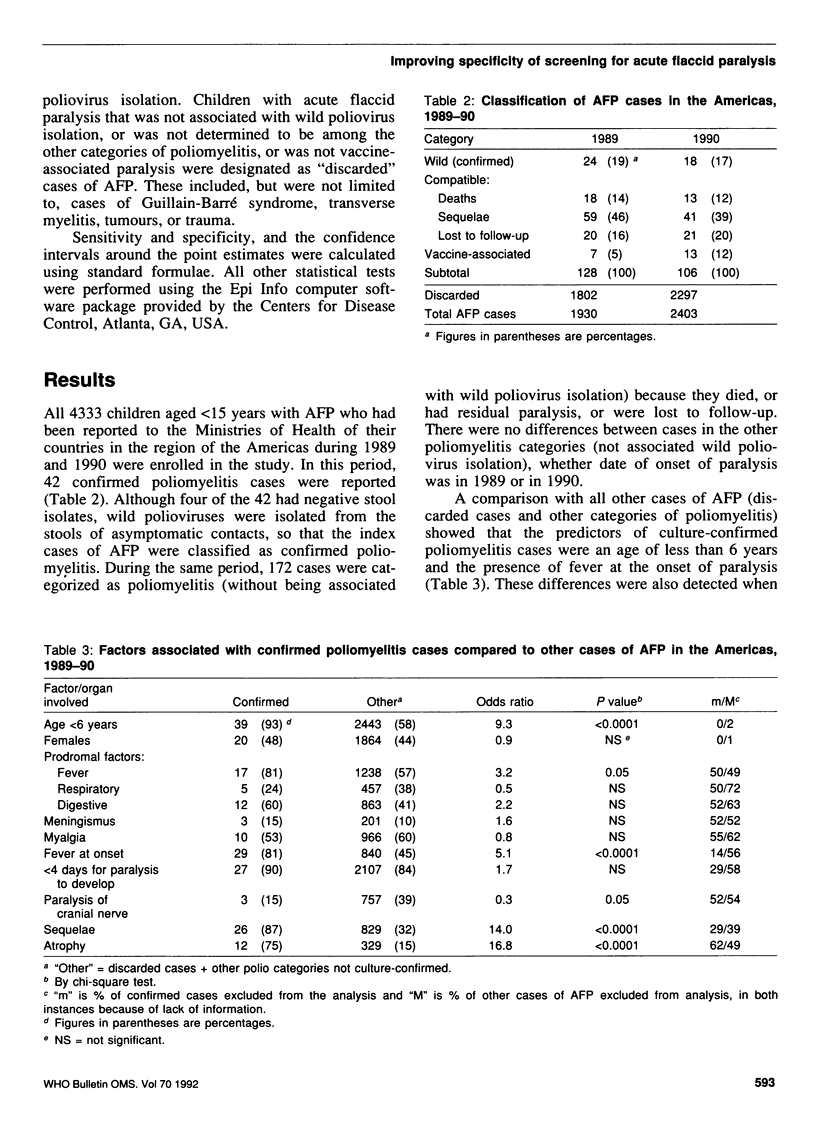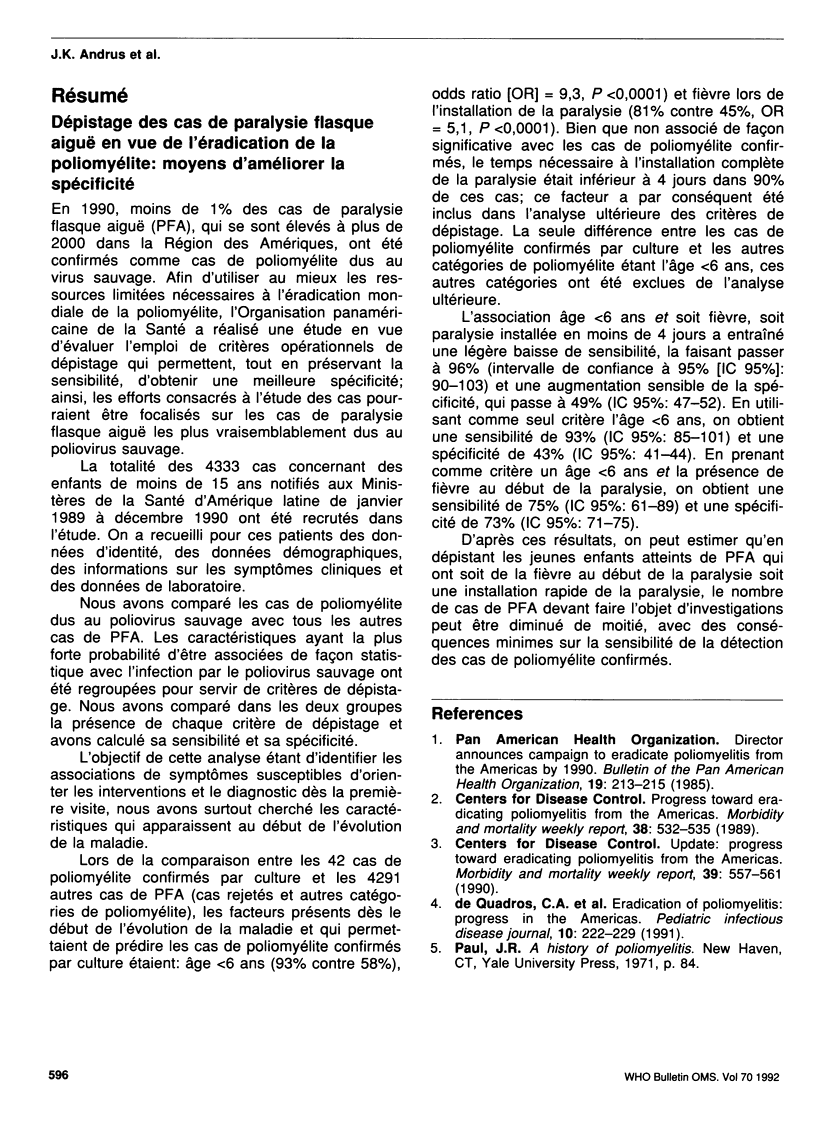Abstract
The Pan American Health Organization in 1985 adopted an initiative to eradicate poliomyelitis from the Western Hemisphere. In 1990, over 2000 cases of acute flaccid paralysis (AFP) were reported in this region, of which < 1% were determined to be caused by wild poliovirus. At present, the eradication programme uses AFP as the criterion for surveillance of children aged < 15 years; this is 100% sensitive, but not specific. To minimize unnecessary diagnostic investigations, we studied all 4333 cases of AFP reported to the programme during 1989 and 1990 in order to develop more efficient operational screening criteria for cases of AFP. Among children with AFP, the use of criteria such as age < 6 years and either presence of fever at the onset of paralysis or a < 4-day period for complete development of paralysis resulted in a sensitivity of 96% (95% C.I. 90-103%) and specificity of 49% (C.I. 47-52%). With criteria of age < 6 years and fever present at the onset of paralysis the sensitivity was 75% (C.I. 61-89%) and specificity was 73% (C.I. 71-75%). These results suggest that by screening young children with AFP who either had fever at the onset or showed a rapid progression of paralysis, the number of cases of AFP requiring investigation can be reduced by one half, with minimal compromise in the sensitivity of confirmed poliomyelitis case detection.
Full text
PDF





Selected References
These references are in PubMed. This may not be the complete list of references from this article.
- Centers for Disease Control (CDC) Progress toward eradicating poliomyelitis from the Americas. MMWR Morb Mortal Wkly Rep. 1989 Aug 11;38(31):532–535. [PubMed] [Google Scholar]
- Centers for Disease Control (CDC) Update: progress toward eradicating poliomyelitis from the Americas. MMWR Morb Mortal Wkly Rep. 1990 Aug 24;39(33):557–561. [PubMed] [Google Scholar]
- De Quadros C. A., Andrus J. K., Olivé J. M., Da Silveira C. M., Eikhof R. M., Carrasco P., Fitzsimmons J. W., Pinheiro F. P. Eradication of poliomyelitis: progress in the Americas. Pediatr Infect Dis J. 1991 Mar;10(3):222–229. doi: 10.1097/00006454-199103000-00011. [DOI] [PubMed] [Google Scholar]


